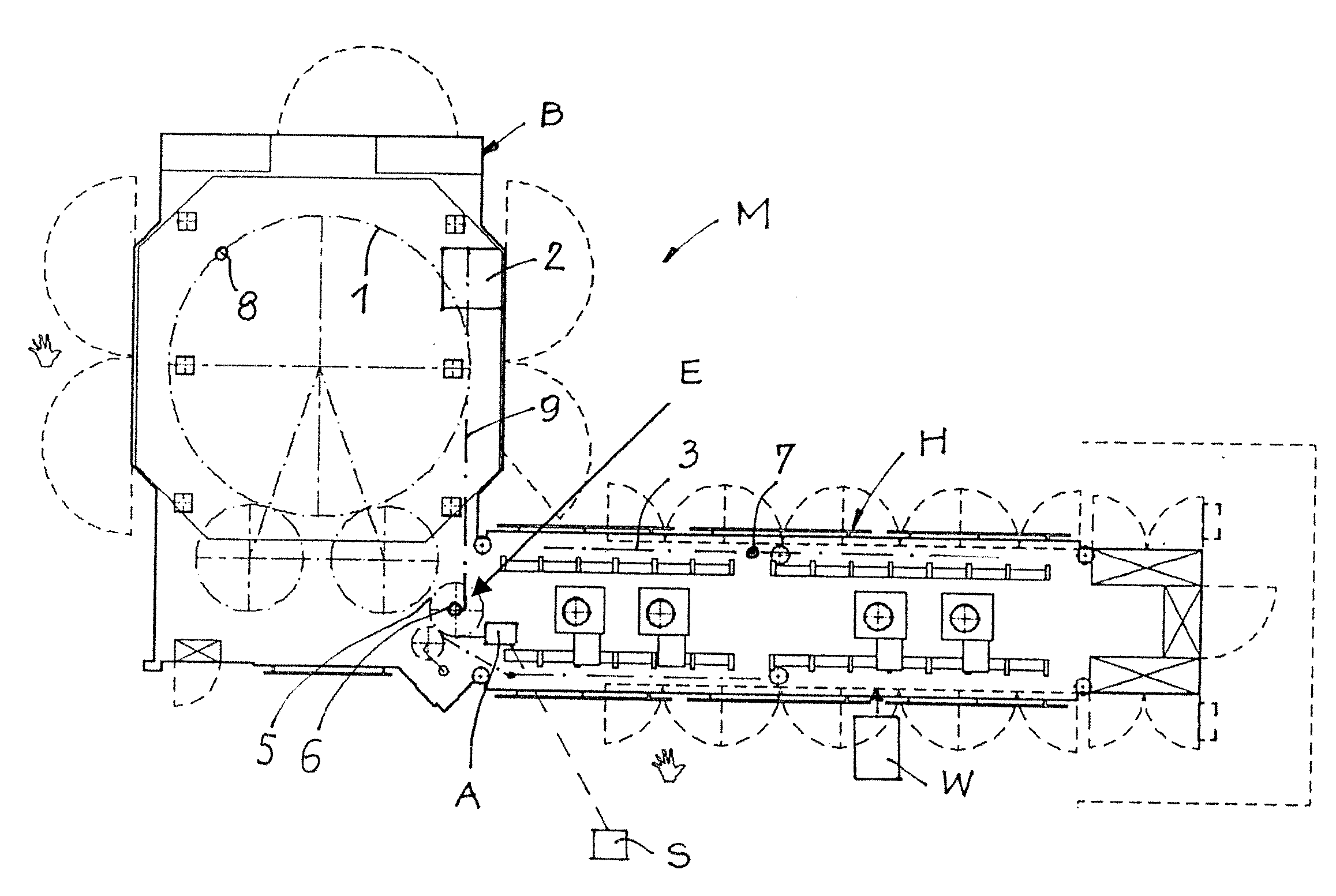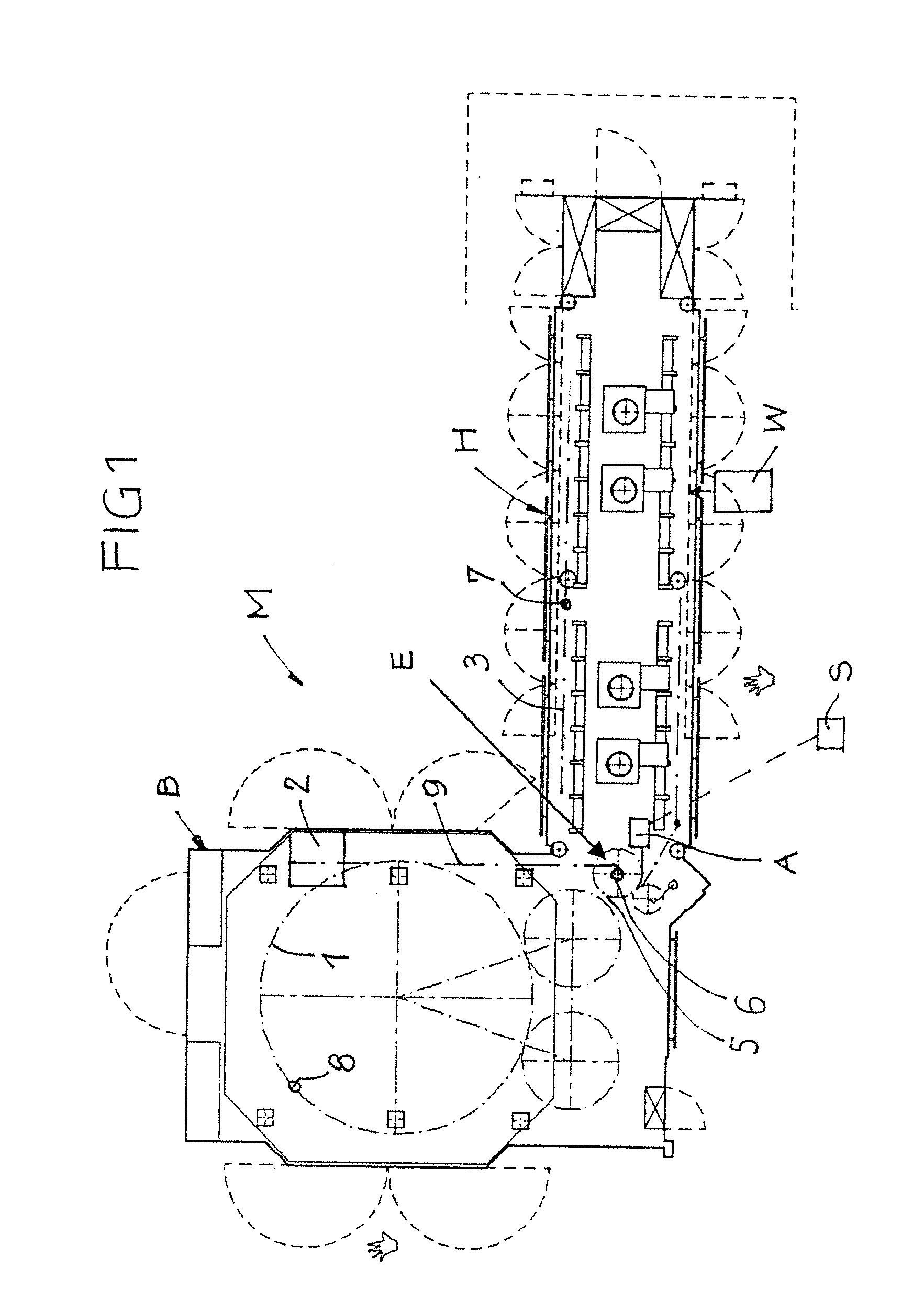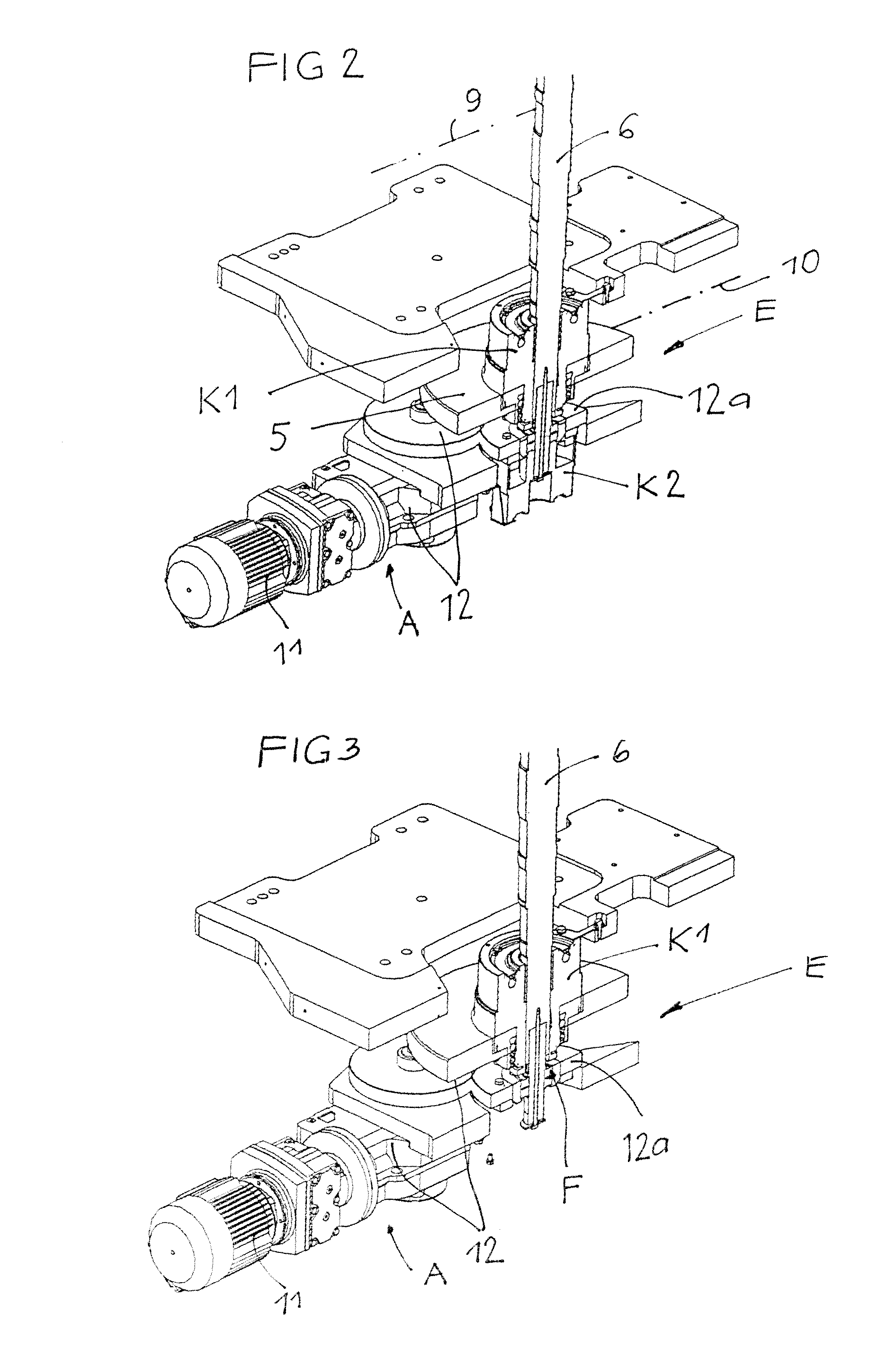Machine for Forming Containers
a technology for forming containers and containers, applied in the field of forming containers, can solve the problems of low operating risk of respective operators, and achieve the effect of facilitating the correction of positions in the heating modul
- Summary
- Abstract
- Description
- Claims
- Application Information
AI Technical Summary
Benefits of technology
Problems solved by technology
Method used
Image
Examples
Embodiment Construction
[0022]FIG. 1 shows a schematic top view of a machine M for forming containers, e.g. a blow moulding machine for continuously blowing or stretch blowing plastic bottles from plastic preforms. In the embodiment shown, a blowing module B is functionally coupled to the heating module H, said heating module H supplying to the blowing module B preforms which have been subjected to a temperature treatment (heating / cooling); these preforms are blown so as to form containers in said blowing module B and are then supplied, if desired, to a unit for further processing. It would be possible to combine more than one blowing module B with a heating module H, or a plurality of heating modules H with a blowing module B.
[0023]The blowing module B contains a rotor 1 which is adapted to be driven by a main drive 2 either permanently or in a clocked mode of operation. The rotor 1 carries as fittings e.g. blow moulds 8. The heating module H implemented as an elongate station and attached to the blowing ...
PUM
| Property | Measurement | Unit |
|---|---|---|
| power | aaaaa | aaaaa |
| time | aaaaa | aaaaa |
| temperature | aaaaa | aaaaa |
Abstract
Description
Claims
Application Information
 Login to View More
Login to View More - R&D
- Intellectual Property
- Life Sciences
- Materials
- Tech Scout
- Unparalleled Data Quality
- Higher Quality Content
- 60% Fewer Hallucinations
Browse by: Latest US Patents, China's latest patents, Technical Efficacy Thesaurus, Application Domain, Technology Topic, Popular Technical Reports.
© 2025 PatSnap. All rights reserved.Legal|Privacy policy|Modern Slavery Act Transparency Statement|Sitemap|About US| Contact US: help@patsnap.com



